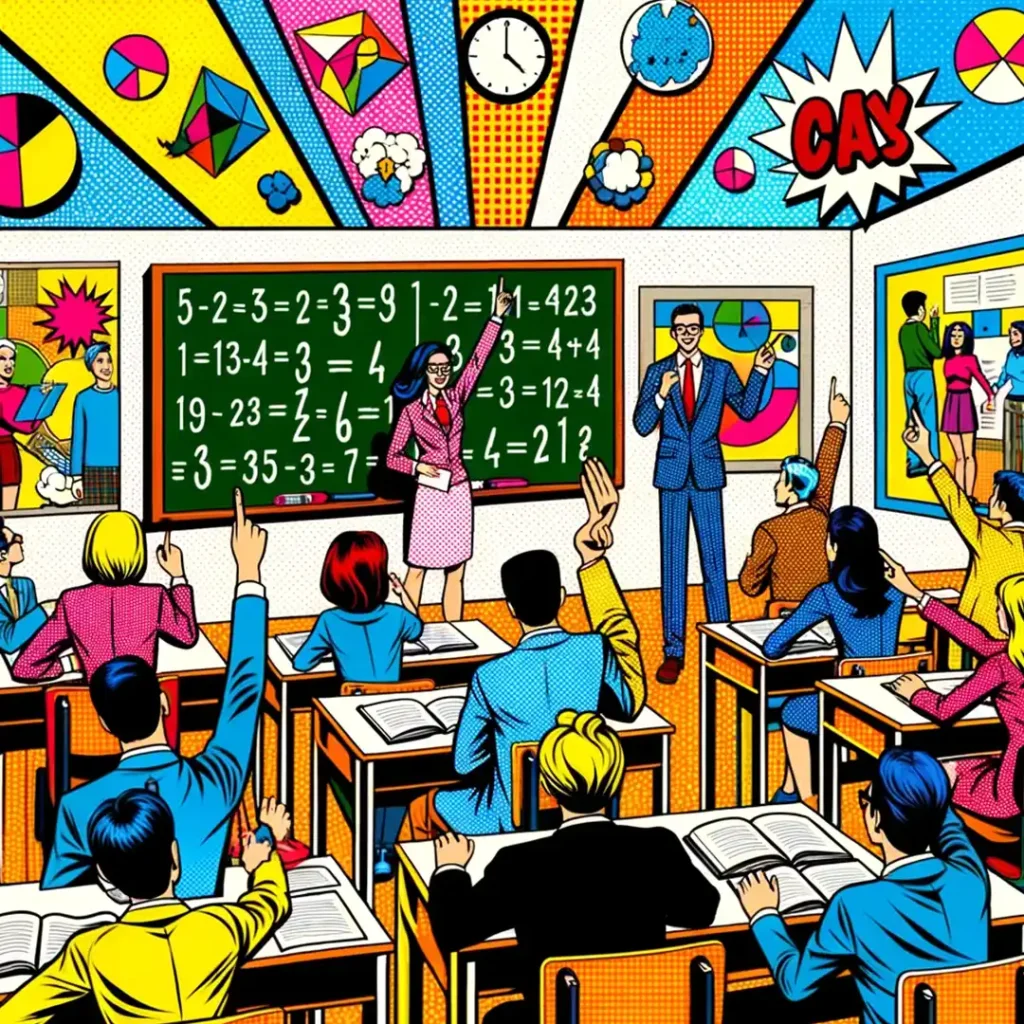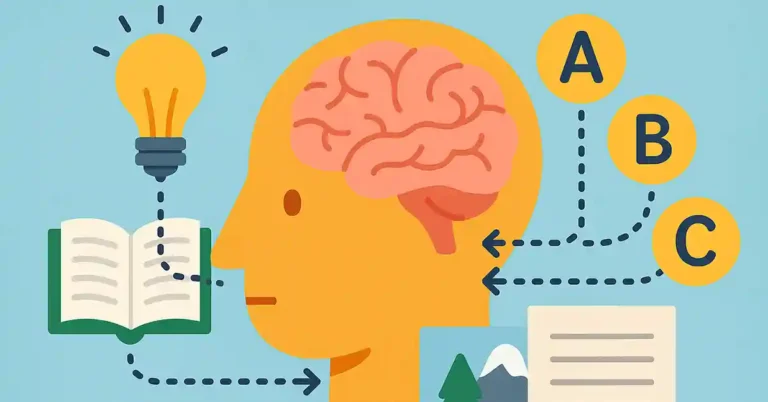Incredible Benefits of Choice in Differentiated Instruction
From my initial days as an educator, the diversity of learners in my classroom was evident. Each child, with their distinctive patterns of understanding and absorbing knowledge, illuminated the profound need for a more tailored approach to teaching. This observation led me on a quest to understand and implement differentiated instruction, especially in an era where student choice is becoming a hallmark of modern education.
Differentiated instruction, at its essence, moves beyond the age-old, standardized techniques that have dominated classrooms for decades. It’s grounded in the belief that our students, though they might sit in the same classroom, come from varied backgrounds, each armed with a distinct set of skills, interests, and learning preferences. Picture a lesson on the lifecycle of a butterfly. Some students might understand best through reading a detailed account, others might need vibrant visuals or interactive models, while a few might require a blend of auditory and kinesthetic experiences. This is the power of differentiation—it offers multiple paths to the same destination of understanding.
The Importance of Differentiated Instruction
Recognizing and catering to these diverse learning styles is not just a didactic obligation but the heart and soul of genuine education. The traditional pedagogic methods, often designed with a “one-size-fits-all” mentality, may work for some but leave many either overwhelmed or unchallenged. Differentiation breaks these monolithic molds. It understands that while every student might stand under the same educational canopy, they all need personalized shelters to thrive.
Beyond just accommodating varied learning methodologies, differentiation makes it a mission to ensure each student’s individual needs are comprehensively addressed. This could involve modifying assignments for those craving more depth, constructing supportive scaffolds for those who might need them, or crafting options so that every student can connect with content in their most resonant manner. Our role as educators goes beyond mere instruction—it’s about recognizing potential, nurturing growth, and celebrating the unique trajectories of each student. Differentiated instruction is the compass that guides us in this noble endeavor.
In today’s evolving educational landscape, the call for student choice has grown louder, resonating in classrooms worldwide. We, as educators, are transitioning from being the singular source of knowledge to becoming enablers and facilitators. Merging the adaptability of differentiated instruction with the empowerment bestowed by student choice lets us not merely acknowledge but celebrate the diverse tapestry of learners in our care.
Understanding Student Choice
In the heart of every student lies an innate desire to explore, understand, and shape their learning experiences. This is where the concept of student choice steps in—a principle that empowers learners to have a voice in their educational journey. So, what exactly is student choice? At its core, student choice allows learners to make decisions about what they learn, how they learn, and how they’ll demonstrate their understanding. It’s not about providing limitless options, but rather about giving students some agency in the learning process, catering to their interests, strengths, and needs.
Beyond its straightforward definition, the significance of student choice in modern education cannot be overstated. At a time when the world outside the classroom is rapidly changing and evolving, offering choice equips students with the autonomy and flexibility they’ll need in their future endeavors. Moreover, from a psychological standpoint, when students are given the autonomy to choose, they naturally become more invested in the tasks at hand. This autonomy nurtures a sense of ownership, responsibility, and connection to the learning material, making the entire process more meaningful and personally relevant.
Key Benefits of Merging Differentiation with Student Choice

Combining the strengths of differentiated instruction with the empowerment of student choice creates a potent educational concoction. This blend not only acknowledges the diverse needs of students but also actively involves them in their learning journey, leading to several tangible benefits.
Increased Engagement and Motivation
One of the most notable advantages is the boost in engagement and motivation. When tasks align with a student’s personal interests and are tailored to their learning style, the connection between the learner and the material strengthens exponentially. It’s akin to choosing your favorite dish from a menu—the personal relevance makes the experience more enjoyable and memorable.
Furthermore, integrating choice within a differentiated framework magnifies the intrinsic motivation in learners. Instead of participating purely for external rewards or validation, students engage because they find genuine joy and satisfaction in the learning process. This intrinsic motivation, as research consistently shows, is a key driver for deeper learning, persistence, and long-term academic success.
Promotion of Autonomy and Responsibility
Another significant advantage of blending differentiated instruction with student choice is the promotion of autonomy and responsibility. By granting students the power to shape their educational experiences, we inadvertently craft a space where they become the architects of their own learning journey.
This autonomy plays a pivotal role in nurturing self-directed learners. These are students who don’t merely wait for knowledge to be handed to them but actively seek, question, and explore on their own terms. Their curiosity becomes the compass guiding their academic pursuits, leading to more genuine and self-motivated learning experiences.
Furthermore, with autonomy comes a heightened sense of responsibility. When students have a say in their learning, they also become more accountable for their academic progress. They’re not just passive participants but active stakeholders, taking pride in their achievements and reflecting on areas of growth. In essence, choice fosters a deeper connection to the learning process, where students are more inclined to take responsibility for their successes and challenges.
Better Understanding and Retention
Delving deeper, the amalgamation of differentiation and choice leads to better understanding and retention of content. One primary reason is the ability to relate materials to personal experiences. When students see relevance in what they’re learning—when they can tether academic concepts to their personal interests or experiences—it creates cognitive hooks that enhance memory and understanding.
Moreover, active participation, which is a natural outcome of choice, results in deeper comprehension. It’s one thing to passively receive information, but entirely another to actively engage with it, question it, and mold it in ways that resonate personally. Such active learning naturally leads to stronger neural connections and longer-lasting retention.
Cultivation of Critical Thinking and Decision Making
By offering choices within a differentiated framework, we also provide students with ample opportunities to hone their critical thinking and decision-making skills. Every choice point becomes an opportunity to evaluate options, weigh pros and cons, and make informed decisions. These moments, though they may seem minor within the classroom’s confines, are rehearsals for bigger life choices.
Furthermore, by constantly navigating these decision points, students are enhancing skills that are vital for facing real-world challenges. The classroom thus becomes a microcosm of the larger world, preparing students not just academically but also equipping them with critical life skills.
Higher Achievement and Performance
Finally, the ultimate testament to the efficacy of merging differentiation with student choice lies in the observed higher achievement and performance among students. With the curriculum tailored to cater to each student’s needs and preferences, there’s a positive impact on academic outcomes. Students are not just meeting the basic requirements; they’re surpassing them because they’re engaging with the material in ways that are most conducive to their unique learning styles.
Moreover, this tailored approach ensures that individualized learning goals are not only set but also met consistently. By personalizing the educational journey, we’re setting each student up for success, honoring their individuality, and ensuring that their potential is fully realized.
Practical Tips for Teachers: Integrating Choice in Lessons
While the theoretical benefits of integrating student choice within a differentiated framework are well-understood, practical implementation can pose its own set of challenges. How does one take these principles and effectively weave them into the fabric of everyday lessons? Let’s explore some actionable strategies that can guide teachers in this transformative journey.
Designing Flexible Lesson Plans
Begin with flexibility at the heart of your lesson planning. Traditional lesson plans, while structured and detailed, often leave little room for divergence. Instead, design plans that are more like a branching tree than a straight line. Identify core objectives but be ready to adapt and pivot based on students’ interests and needs. This doesn’t mean discarding structure but rather allowing room for organic exploration and discovery within set boundaries.
Offering Varying Levels of Challenge and Modes of Representation
Recognize the diversity of learners in your classroom. To ensure that each student is engaged and challenged appropriately, offer tasks at varying levels of difficulty. This might mean providing extension activities for those who grasp concepts quickly or scaffolding for those who need additional support.
Moreover, embrace multiple modes of representation. Some students may prefer visual aids like charts and infographics, while others might resonate more with verbal explanations or hands-on activities. By offering varied avenues of engagement, you’re ensuring that every student finds their optimal path to understanding.
Implementing Diverse Assessment Options
Assessment is a crucial component of the learning process, providing insights into student understanding and areas for growth. Diversify your assessment techniques to align with the spirit of choice. Instead of a singular test or project, consider offering a menu of assessment options. For instance, a student could choose between writing an essay, creating a presentation, or even designing a hands-on project. Such an approach not only caters to different learning styles but also allows students to showcase their understanding in a manner they’re most comfortable with.
Encouraging Student Feedback
Lastly, but perhaps most importantly, solicit feedback from your students. Regularly check in with them to understand what’s working and what might need tweaking. Their insights can provide invaluable guidance as you refine and adapt your strategies. By fostering an environment where students feel their voices are valued, you’re not only enhancing their learning experience but also building a sense of community and trust within the classroom.
Incorporating choice within differentiated lessons isn’t a mere educational trend—it’s a testament to a modern, adaptive, and student-centric approach to teaching. With these practical tips, teachers can seamlessly integrate choice into their classrooms, cultivating an environment where every student feels empowered, engaged, and genuinely excited about their learning journey.
Challenges and Considerations

Integrating choice within a differentiated framework is not without its hurdles. As with any educational strategy, there are inherent challenges and considerations to keep in mind:
Balancing Choice with Curriculum Demands
One of the foremost concerns for educators is striking a balance between offering choice and adhering to set curriculum standards. While the idea of providing numerous options sounds ideal, there’s a practical need to ensure that essential content is covered and key skills are developed. It becomes crucial, therefore, to find that sweet spot where choice enhances the curriculum rather than detracting from it.
Ensuring Equitable Opportunities for All Students
In the quest to personalize learning, we must remain vigilant to ensure that every student has equitable access to opportunities. This means that while one student’s choice might lead them down a particular path, others should not be left behind or deprived of similar enriching experiences. It’s a delicate balance of individualizing learning while ensuring a collective progression.
Monitoring and Adjusting Based on Feedback
The dynamic nature of integrating choice means that it’s not a “set it and forget it” strategy. Continuous monitoring and adjustments based on student feedback are paramount. What works well for one cohort might need tweaking for another. Teachers should remain adaptive, willing to pivot when necessary, and always be attuned to the evolving needs and responses of their students.
Conclusion
The landscape of education is in a state of flux, marked by innovations, experiments, and a renewed focus on student-centric approaches. At the forefront of this evolution are concepts like differentiated instruction and student choice—strategies that prioritize individual student needs, aspirations, and agency.
Embracing this paradigm shift requires courage, adaptability, and a commitment to envisioning education not as a one-size-fits-all model but as a diverse, flexible, and responsive entity. It’s about acknowledging that the classrooms of today are preparing students for a world that’s vastly different from the past—a world where critical thinking, autonomy, and adaptability are paramount.
Therefore, as educators, our mission extends beyond mere content delivery. It’s about sculpting an environment where every student, regardless of their starting point, can soar to unprecedented heights. So, let this be a call to action. Dive into the waters of differentiation and choice, experiment with their vast potentials, and witness the transformative power they can unleash in our classrooms. Let us not just teach but inspire, empower, and truly make a difference in the lives of our students.






